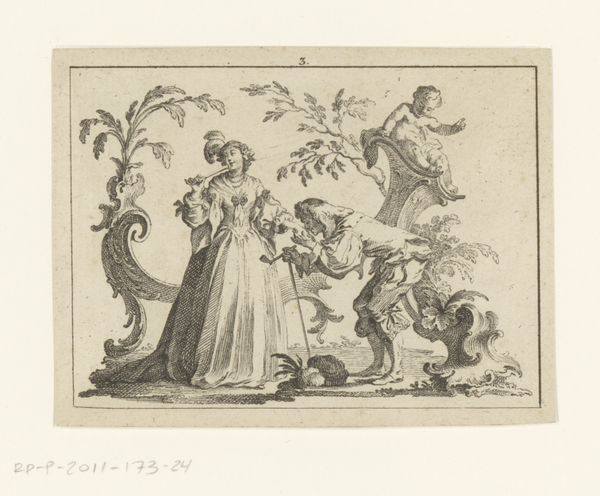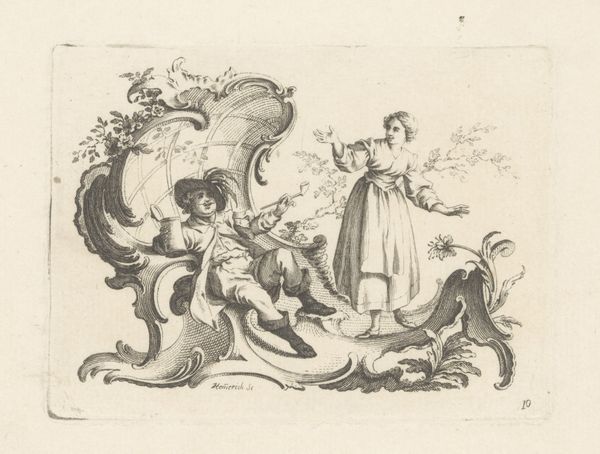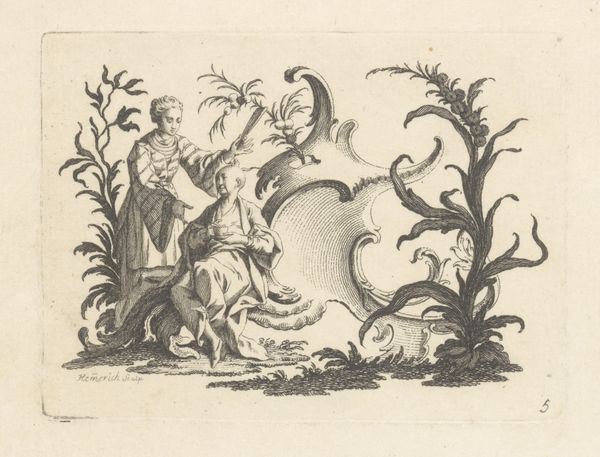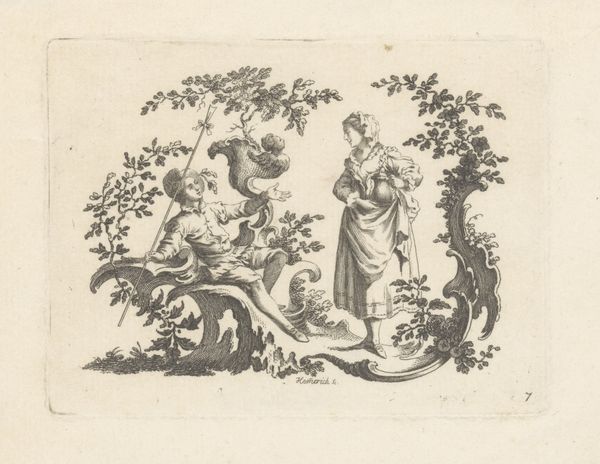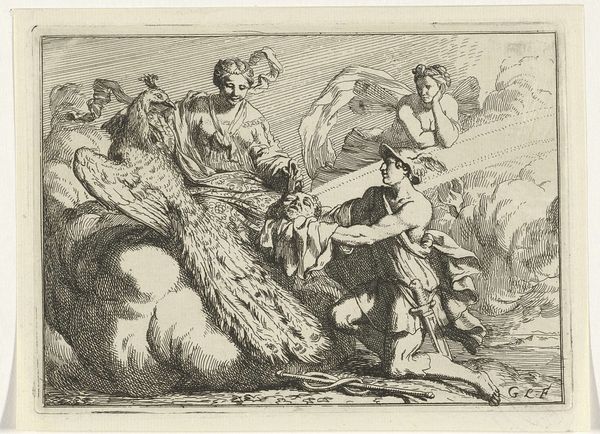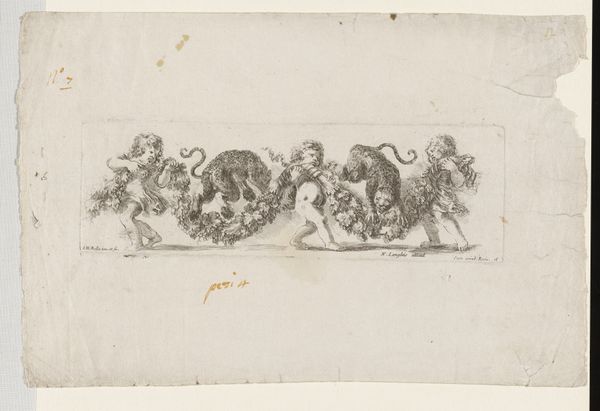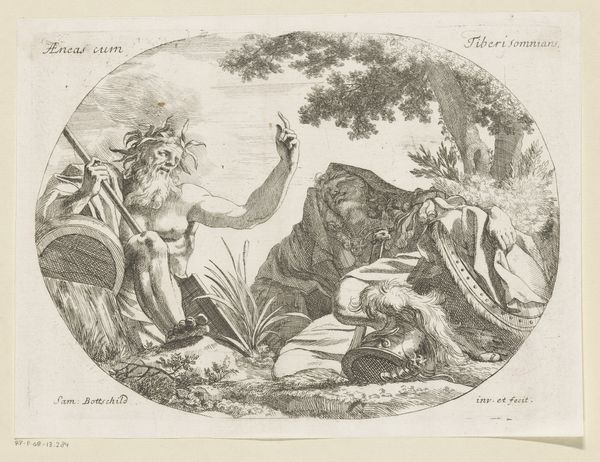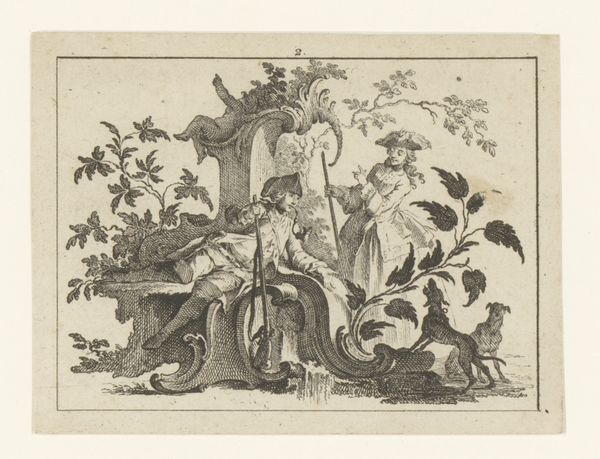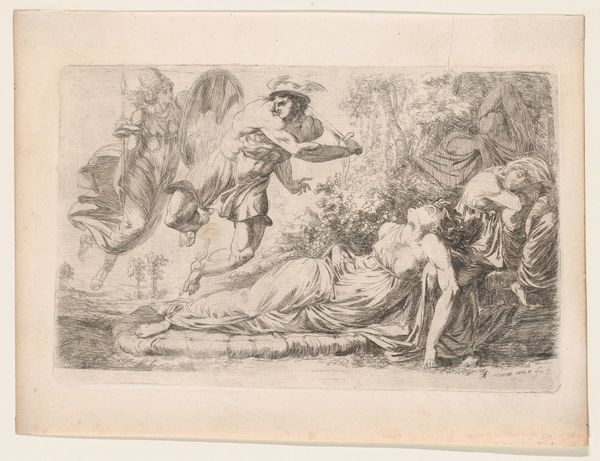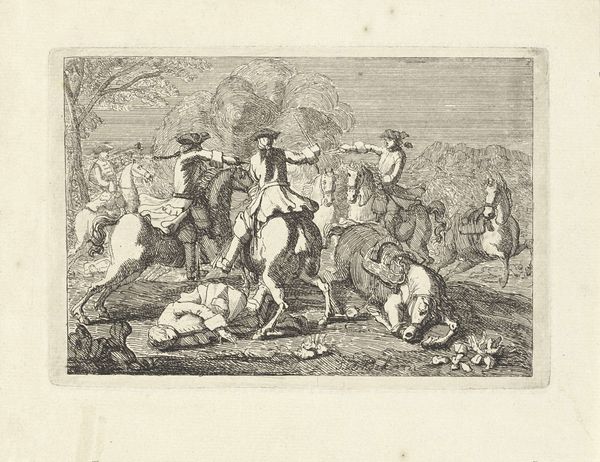
drawing, pen, engraving
#
drawing
#
imaginative character sketch
#
light pencil work
#
baroque
#
pen sketch
#
pencil sketch
#
figuration
#
personal sketchbook
#
ink drawing experimentation
#
pen-ink sketch
#
sketchbook drawing
#
pen
#
genre-painting
#
sketchbook art
#
engraving
#
fantasy sketch
Dimensions: height 81 mm, width 106 mm
Copyright: Rijks Museum: Open Domain
This is an etching, made by Cornelius Heinrich Hemerich. Etching is an intaglio printmaking technique that relies on the corrosive power of acid to create lines in a metal plate. The plate is first covered with a waxy, acid-resistant ground. The artist then scratches an image into this ground, exposing the metal beneath. When the plate is dipped in acid, the exposed areas are eaten away, creating grooves. The depth of these grooves determines how much ink they will hold, and thus the darkness of the lines in the final print. The amount of work involved in creating the print can be appreciated from the precision of the lines and the subtle rendering of tone. The print is delicate, and the use of line to show a fashionable lady receiving the kind attention of a man can give us an insight into the social mores of the time. By focusing on the labor-intensive and meticulous techniques involved in creating this etching, we can see how these processes imbue the artwork with cultural significance. It challenges distinctions between fine art and craft, and allows us to understand the wider social context of its creation.
Comments
No comments
Be the first to comment and join the conversation on the ultimate creative platform.
